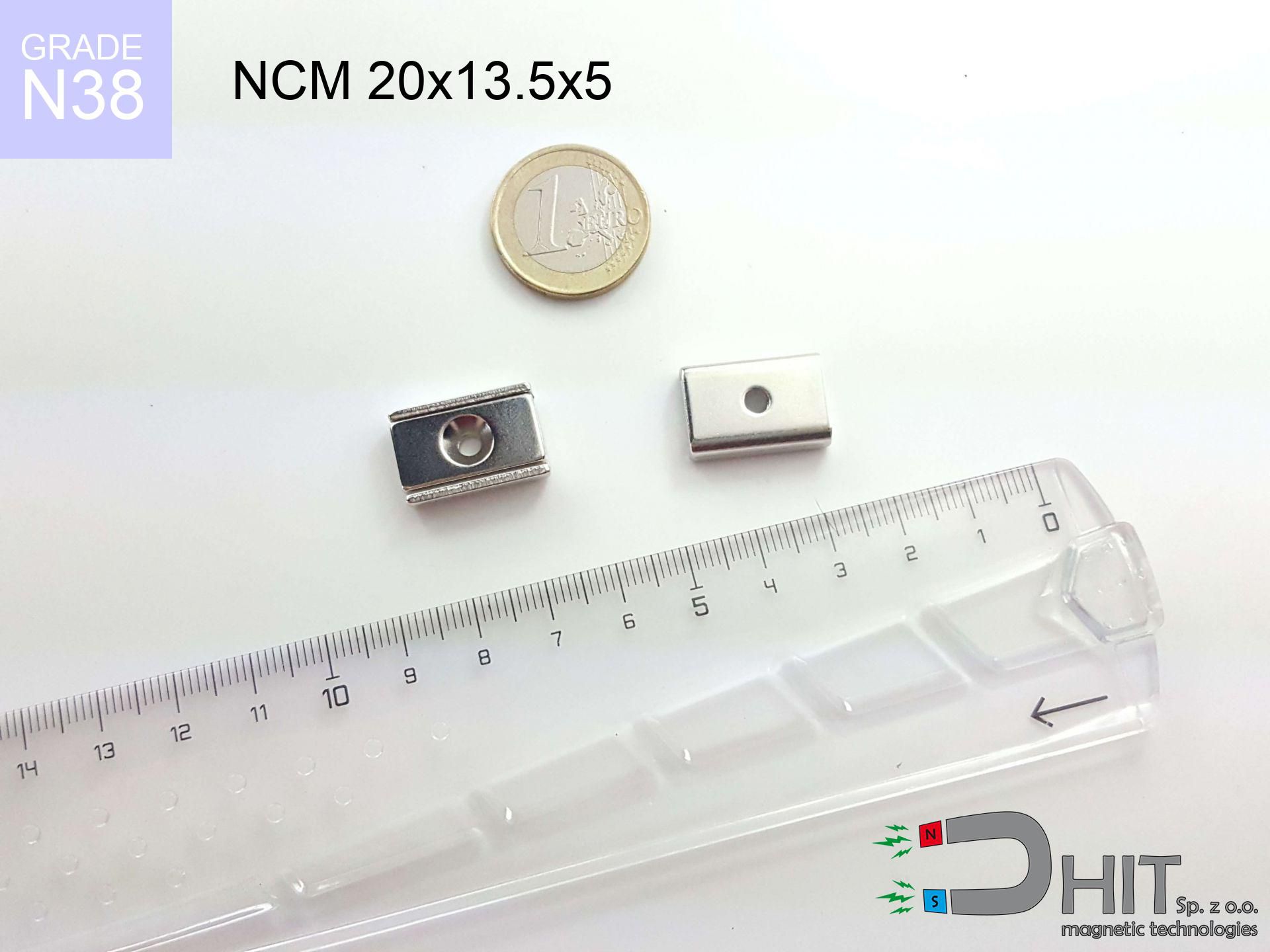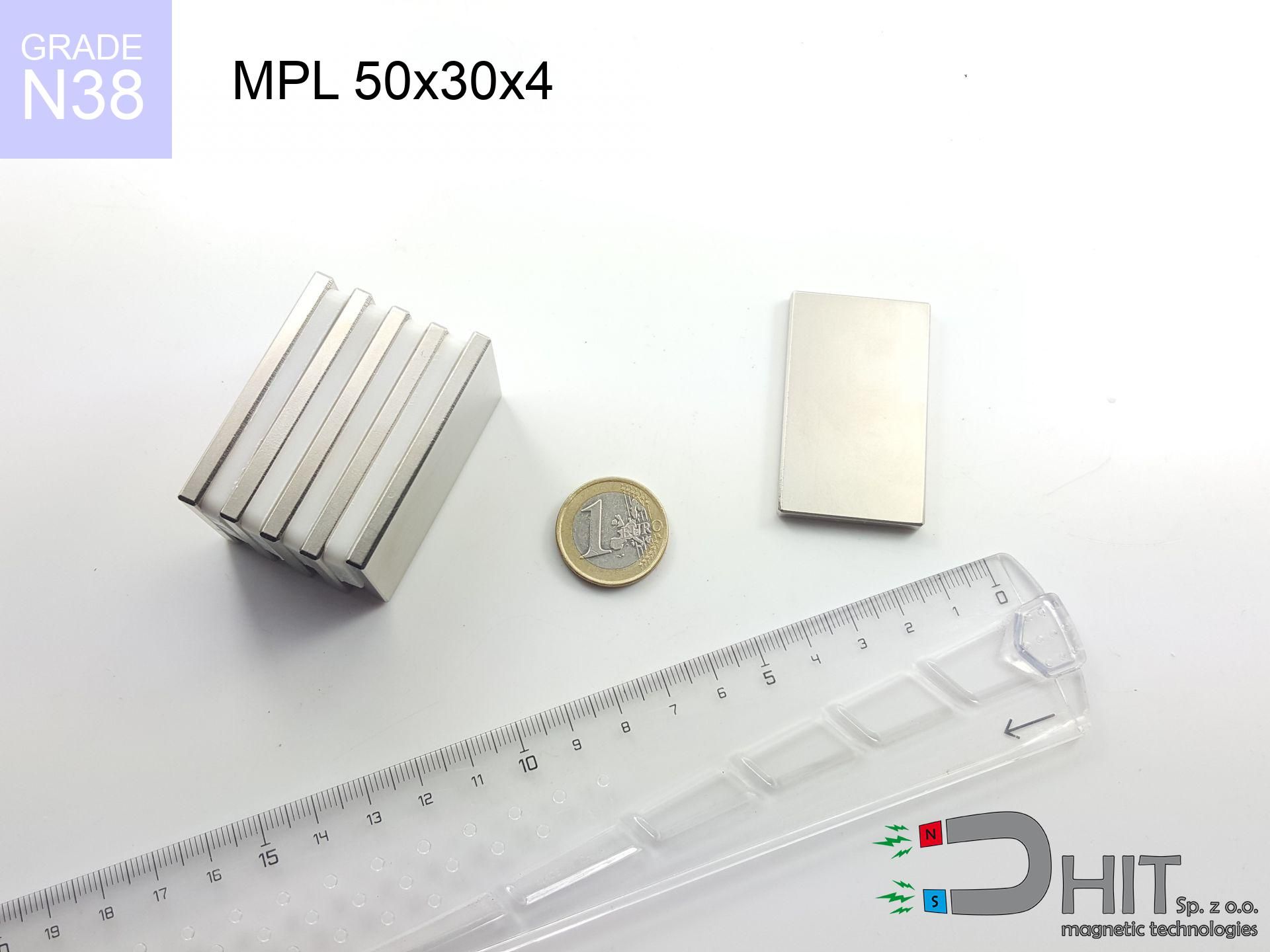LM TLN - 20 R
magnetic leviton
catalog number 290492
GTIN: 5906301814504
catalog number 290492
GTIN: 5906301814504
400.00 ZŁ gross price (including VAT) / pcs +
325.20 ZŁ net price + 23% VAT / pcs
Don't know what to buy?
Call us tel: +48 888 99 98 98 or write via contact form on the contact page. You can check the strength and the appearance of magnet in our magnetic mass calculator force calculator
Orders placed by 2:00 PM will be shipped on the same business day.
Specification: magnetic leviton TLN - 20 R
List recommended items
Advantages as well as disadvantages of neodymium magnets NdFeB.
In addition to immense strength, neodymium magnets have the following advantages:
- They do not lose their power (of the magnet). After about 10 years, their power decreases by only ~1% (theoretically),
- They protect against demagnetization caused by external magnetic field extremely well,
- Thanks to the shiny finish and nickel, gold, or silver coating, they have an aesthetic appearance,
- They possess very high magnetic induction on the surface of the magnet,
- Thanks to their high temperature resistance, they can operate (depending on the form) even at temperatures up to 230°C and above...
- Due to the option of accurate forming or adaptation to individual needs – neodymium magnets can be produced in a wide range of shapes and sizes, which expands the range of their possible uses.
- Key role in the industry of new technologies – are used in HDD drives, electric drive mechanisms, medical apparatus or very modern machines.
Disadvantages of neodymium magnets:
- They are fragile when subjected to a powerful impact. If the magnets are exposed to impacts, we recommend using magnets in a protective case. The steel housing in the form of a holder protects the magnet from impacts and at the same time increases its overall strength,
- High temperatures can reduce the strength of neodymium magnets. Typically, after heating above 80°C, most of them experience a permanent reduction in strength (although it is dependent on the shape and size). To prevent this, we offer special magnets marked with the symbol [AH], which are highly resistant to high temperatures. They can operate even at temperatures up to 230°C, making them an ideal solution for applications requiring high-temperature operation,
- Magnets exposed to a humid environment can corrode. Therefore, when using them outdoors, we suggest using waterproof magnets made of rubber, plastic, or other moisture-resistant materials,
- Limited ability to create threads or complex shapes in the magnet - the use of a housing is recommended - magnetic holder
- Potential hazard arising from small pieces of magnets pose a threat, if swallowed, which becomes significant in the context of children's health. It's also worth noting that small elements of these devices have the potential to complicate diagnosis in case of swallowing.
Be Cautious with Neodymium Magnets
It is important to keep neodymium magnets out of reach from children.
Remember that neodymium magnets are not toys. Do not allow children to play with them. They can be a significant choking hazard. If multiple magnets are swallowed, they can attract to each other through the intestinal walls, causing severe injuries, and even death.
Magnets will attract to each other, so remember not to allow them to pinch together without control or place your fingers in their path.
If you have a finger between or alternatively on the path of attracting magnets, there may be a severe cut or a fracture.
Neodymium magnets can become demagnetized at high temperatures.
While Neodymium magnets can lose their magnetic properties at high temperatures, it's important to note that the extent of this effect can vary based on factors such as the magnet's material, shape, and intended application.
Do not bring neodymium magnets close to GPS and smartphones.
Magnetic fields can interfere with compasses and magnetometers used in aviation and maritime navigation, as well as internal compasses of smartphones and GPS devices. There are neodymium magnets in every smartphone, for example, in the microphone and speakers.
Magnets made of neodymium are especially fragile, resulting in damage.
Neodymium magnets are characterized by significant fragility. Neodymium magnets are made of metal and coated with a shiny nickel surface, but they are not as hard as steel. At the moment of connection between the magnets, sharp metal fragments can be dispersed in different directions.
Avoid contact with neodymium magnets if you have a nickel allergy.
Studies show a small percentage of people have allergies to certain metals, including nickel. An allergic reaction often manifests as skin redness and rash. If you have a nickel allergy, you can try wearing gloves or simply avoid direct contact with nickel-plated neodymium magnets.
Neodymium magnets should not be near people with pacemakers.
Neodymium magnets generate strong magnetic fields. As a result, they interfere with the operation of a pacemaker. This is because many of these devices are equipped with a function that deactivates the device in a magnetic field.
Do not place neodymium magnets near a computer HDD, TV, and wallet.
Strong fields generated by neodymium magnets can damage magnetic storage media such as floppy disks, credit cards, magnetic ID cards, cassette tapes, video tapes, or other similar devices. They can also damage televisions, VCRs, computer monitors, and CRT displays. You should especially avoid placing neodymium magnets near electronic devices.
Dust and powder from neodymium magnets are flammable.
Avoid drilling or mechanical processing of neodymium magnets. If the magnet is crushed into fine powder or dust, it becomes highly flammable.
Neodymium magnets are the strongest magnets ever created, and their power can shock you.
On our website, you can find information on how to use neodymium magnets. This will help you avoid injuries and prevent damage to the magnets.
To illustrate why neodymium magnets are so dangerous, read the article - How dangerous are very strong neodymium magnets?.



![magnetic separator 32x250 [2xM8] / N42 magnetic separator 32x250 [2xM8] / N42](https://cdn3.dhit.pl/graphics/products/sm-32x250-2xm8-kex.jpg)




